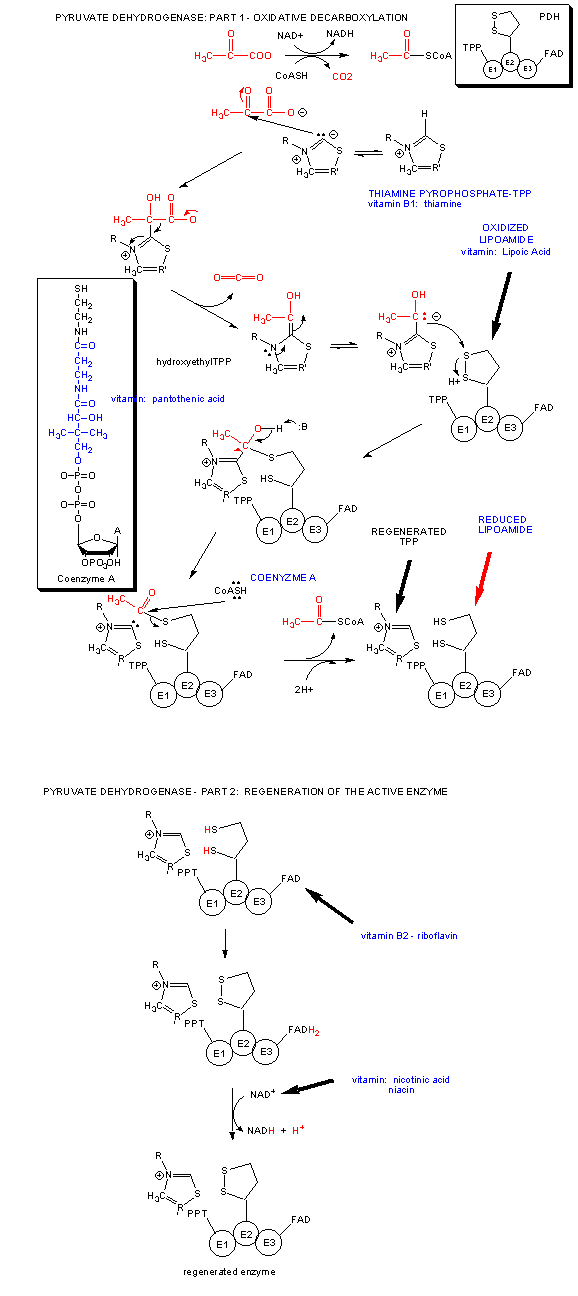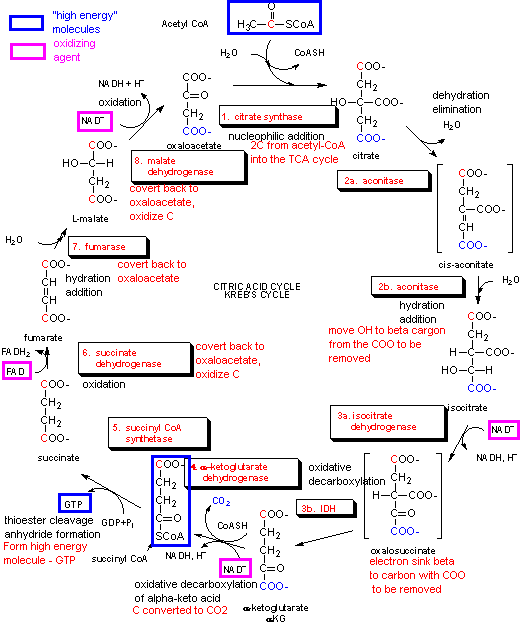CHAPTER 8 - OXIDATION/PHOSPHORYLATION
C: ATP AND OXIDATIVE PHOSPHORYLATION
BIOCHEMISTRY - DR. JAKUBOWSKI
04/15/16
|
Learning Goals/Objectives for Chapter 8C:
After class and this reading, students will be able to
- explain reasons for the strongly exergonic hydrolysis of
carboxylic acid anhydrides, phosphoric acid anhydrides, mixed
anhydrides, and analogous structures and give approximate
values for the ΔG0 of hydrolysis of them;
- identify from Lewis structures molecules whose hydrolytic
cleavage are strongly exergonic;
- explain how the exergonic cleavage of phophoanhydride bonds
in ATP can be coupled to the endergonic synthesis of
macromolecules like proteins;
- draw mechanisms to show how oxidation and phosphorylation
reactions are coupled in anaerobic metabolism through the
productions of a mixed anhydride catalyzed by the glycolytic
enzyme glyceraldehyde-3-phosphate dehydrogenase;
- explain how arsenate can double oxidation and
phosphorlyation reactions in glycolysis
- explain how NAD+ can be regenerated from NADH in anaeroboic
condition to allow glycolysis to continue;
- explain the general flow of electrons from NADH to dioxgen
through a series of mobile and membrane protein bound electron
acceptors in electron transport in the mitochondria inner
member.
- explain with picture diagrams how oxidation and
phosphorylation reactions (to produce ATP) are coupled in
aerobic metabolism through the generation and collapse of a
proton gradient in the mitochondria;
- draw pictures diagrams explaining the structure of
F1F0ATPase in the inner mitochondria member and explain using
the picture how ATP synthesis is coupled to protein gradient
collapse
- write an equation for the electrochemical potential and use
it to calculate the available ΔG0 for ATP production on proton
gradient collapse, given typical values for ΔpH and ΔE across
the membrane
|
C3. Aerobic Coupling of Oxidation and ATP Synthesis
A quick glance reveals that we have taken
glucose a small fraction along the way of oxidizing every carbon in it to
CO2 and H2O. The complete oxidation happens under aerobic condition when the
glycolytic pathway is followed by the Kreb's cycle. Pyruvate formed in
glycolysis enters the mitochondrial matrix, and get oxidatively
decarboxylated to a 2C molecule, acetylCoA by the enzyme pyruvate
dehydrogenase.

Acetyl CoA then enters the Kreb's cycle (also called the tricarboxylic
acid (TCA) cycle. It is shown below.

 Navigation
Navigation
Return to Chapter 8C:
ATP and Oxidative Phosphorylation
Return to
Biochemistry Online Table of Contents
Archived version of full
Chapter 8C:
ATP and Oxidative Phosphorylation

Biochemistry Online by Henry Jakubowski is licensed under a Creative Commons Attribution-NonCommercial 4.0 International License.



Navigation
